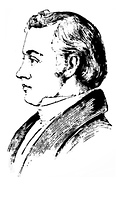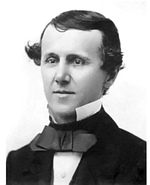When Newspaper Gag Laws from the 1830s Touched Palisades
Nearly two hundred years ago, the Presbyterian minister, journalist and publisher Elijah P. Lovejoy briefly became the most famous white newspaperman to die for the abolitionist cause in America. This now largely forgotten incident, which occurred on November 7, 1837, in Alton, Illinois, electrified the nation during the 1830s and 1840s. A Princeton–educated publisher shot dead in cold blood by a pro–slavery mob caught the public's attention.
The unpunished killing symbolized the relentless campaign being carried out by southern slave owners and their sympathizers to suppress freedom of the press in the United States in the years leading up to the Civil War. Even in the U.S. House of Representatives, the First Amendment notwithstanding, a gag rule prohibited all discussion of slavery for the years 1836 to 1844.
Lovejoy was making his fourth attempt to publish a newspaper dedicated to exposing the abuses of slavery when he asked a close friend, 29–year–old St. Louis merchant Winthrop Sargent Gilman, to hide his newly delivered printing press in a warehouse he owned in Alton, Illinois. During the summer and fall, Lovejoy’s three previous presses had been destroyed by mobs. By moving operations across the river from St. Louis to the free state of Illinois, Gilman and Lovejoy hoped he could resume publication.
Gilman well understood the risk they were both taking. Born and raised in New York City into a very wealthy family, Gilman went west to Missouri in his 20s to become a businessman, selling groceries to pioneers. At the time St. Louis was the gateway to all western settlement.
This incident directly touches our local history because Gilman retired to Palisades in 1871. His large home here, which housed thirteen children, servants and friends, was called Heyhoe, a whimsical name that lives on as the name of a short road near the original building site. The abandoned mansion burned to the ground in the 1930s shortly after Route 9W was built.
Gilman played a courageous role in the event at great personal cost. Not only was his large warehouse and its entire contents nearly burned to the ground with him in it during a riot but, according to the diary of a visiting Boston merchant named John Kimball, following the riot Gilman went missing, and was “probably hunted down and perhaps thrown into the river.”
Two months later, authorities sympathetic to the rioters put Gilman on trial for inciting the violence, charging the young merchant with “unlawful defense” of his warehouse. Rescued by the skill of an expensive New York lawyer sent by his father, Gilman’s case was dismissed, but so was the case against eleven members of the attacking mob, who killed Lovejoy and destroyed thousands of dollars of Gilman’s property. Perhaps the jury foreman, injured while attacking the warehouse, had something to do with this outcome.
Gilman returned to New York City, went to work for his banker father and evolved into a respectable Victorian gentleman and a friend of Andrew Carnegie. Thirteen years after the Alton riot, John Brown’s raid on Harper’s Ferry in 1859 eclipsed the Lovejoy murder, and two years later the Civil War broke out in 1861.
Historical stifling of local newspapers willing to publish inconvenient and uncomfortable information continues to find echoes in events today in the United States from Marion, Kansas to Flint, Michigan. As the venerable Southern writer William Faulkner once observed, “The past is never dead. It’s not even past.”




